Visitors to ‘Olafur Eliasson: In real life’ at Tate Modern enter the exhibition through a small room occupied by a large see-through box, in which scores of miniature models and prototypes of Eliasson’s work are piled on top of each other: cardboard polyhedra inhabited by standing figures cut out to scale, copper wire mobiles, spheres crafted from blocks of Lego that are illuminated from within by electric bulbs. In a way, despite its size, this is the most spectacular room of the exhibition – the intricacy and structural ingenuity of these myriad creations evoke a modern-day Wunderkammer.
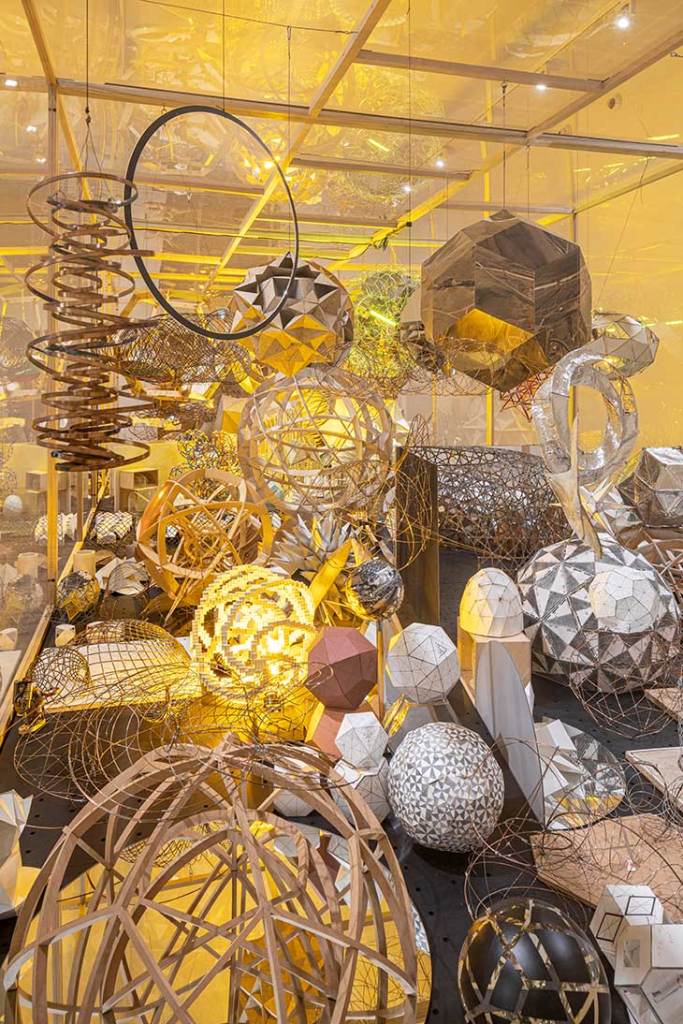
Model room (2003), Olafur Eliasson in collaboration with Einar Thorsteinn. Installation view of ‘Olafur Eliasson: In real life’, Tate Modern, London, 2019. Moderna Museet, Stockholm. Photo: Anders Sune Berg. © 2003 Olafur Eliasson
Eliasson returns to the Tate after his extremely popular commission of 2003, The Weather Project, which drew hordes of people to gather beneath the artificial sun Eliasson had installed in the Turbine Hall. This vast space, which was also filled with a faint mist, was reflected in an overhead mirror to dazzling, and dizzying, effect. The current exhibition occupies nowhere near as much room, but its closest equivalent to The Weather Project is probably Din Blinde Passager (Your Blind Passenger, 2010). To enter this installation, visitors are first ushered into a holding pen and then released into a narrow corridor filled with brightly lit artificial fog – an intentionally disorienting experience, though not as bewildering here as it might be were the installation less crowded.
Some critics have decried the ‘event-ification’ of contemporary art through experiential installations, often citing Eliasson as a chief offender; with their crowds, queues and special effects, such works arguably reduce the museum to the level of an amusement park like Disneyworld (or perhaps Legoland?), all thrills and no thinking. Eliasson makes no bones about his fascination with the apparatus of amusement, and with the potential for trickery in light and shadow: fog machines, kaleidoscopes, strobe lights, and one-way convex mirrors fill the galleries, often with quite breath-taking effects.
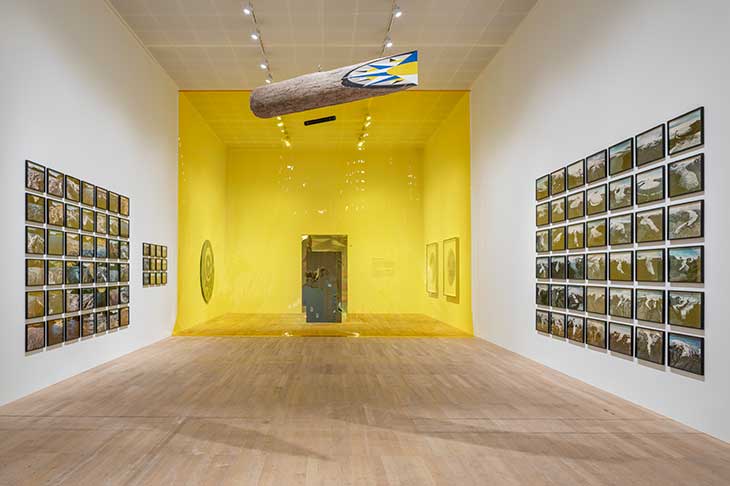
Installation view of ‘Olafur Eliasson: In real life’ at Tate Modern, London, 2019. In the middle of the room hangs Suney (1995). Photo: Photo: Anders Sune Berg
Does enjoying these aspects of the display mean automatically surrendering our critical faculties? Unlike the Wizard of Oz, Eliasson does not set out to hide the truth behind the curtain. Central to his project is the idea that our perception and understanding of our environments can best be heightened through sensory experience. The materials that make the magic happen are on full view, particularly in the earlier work: a series of motors that send small waves rippling through shallow pools of water (Wavemachines; 1995); a massive sheet of transparent yellow plastic dividing a gallery in two, acting as a makeshift light filter (Suney, 1995). In Din Blinde Passager, visitors are told to look at the ceiling or the ground if they get too disoriented: perception is a tricky, shifting thing.
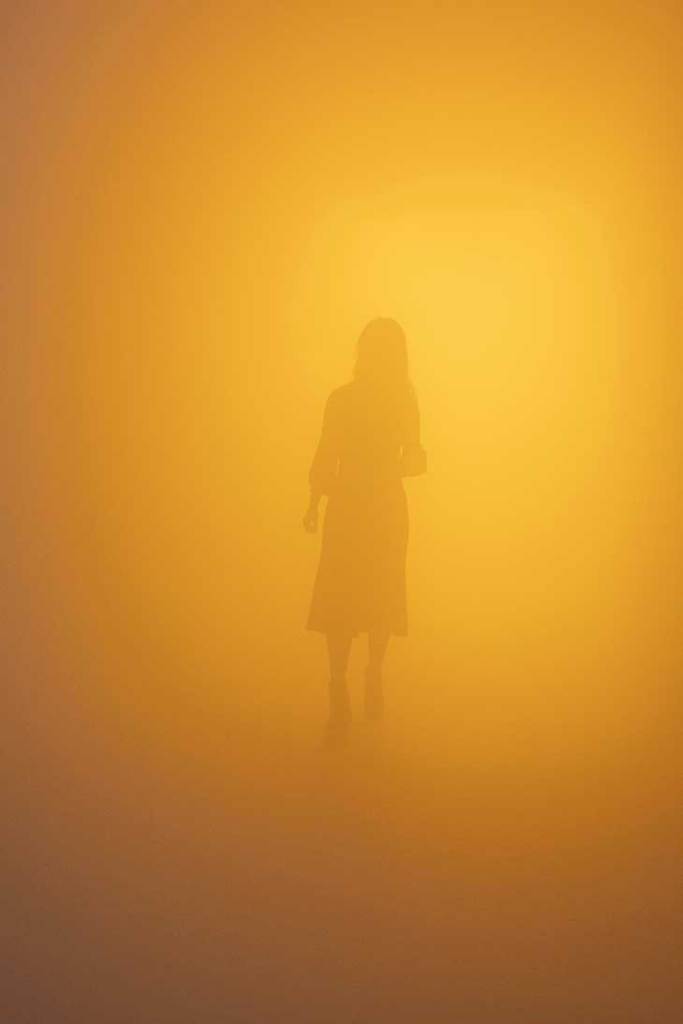
Din blinde passager (Your blind passenger) (2010), Olafur Eliasson. Installation view of ‘Olafur Eliasson: In real life’, Tate Modern, London, 2019. Photo: Anders Sune Berg. © 2003 Olafur Eliasson
One of Eliasson’s aims across his work is to do something about climate change, in more or less overt ways. While Eliasson’s light- and fog-filled installations seek to make us more aware of climatic changes and their effects, they are more closely related to movements like Op art – think of the brightly lit chambers of Carlos Cruz-Diez’s Chromosaturation (1965) – than anything that might be called ecological art. In more recent projects, however, he has redirected his focus. Ice Watch (2014–) is a collaboration with the geologist Minik Rosing in which large blocks of glacial ice have been installed – and soon melted – in public locations around Europe, presented with the express purpose of ‘transform[ing] climate knowledge into climate action’. It’s worth noting, as the exhibition does in the caption to a video documenting that work, that ‘the carbon cost for bringing 30 blocks of ice to the two sites in London was approximately equal to flying two school classes (52 students) from London to Greenland and back to witness the melting of the Greenland ice sheet’ – pre-empting one common criticism about climate activists jetting around the world, while raising other questions. Can such symbolic actions really bring home the severity of the current state, and expected future, of our planet – or tell us what to do about it?
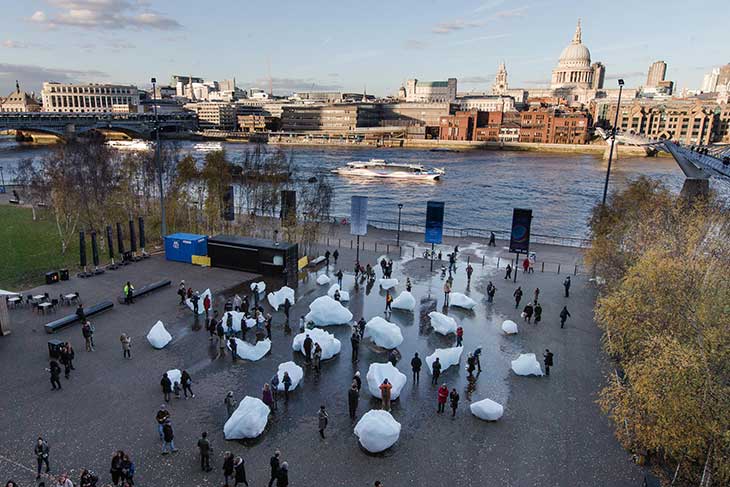
Installation view of Olafur Eliasson and Minik Rosing’s Ice Watch on Bankside, outside Tate Modern, 2018. Photo: Charlie Forgham Bailey. © 2018 Olafur Eliasson and Minik Rosing
If there is one idea that emerges strongly and consistently throughout the exhibition, and even in the three-course vegetarian set menu designed by the Studio Olafur Eliasson (SOE) Kitchen that is currently available in the Tate’s café, it is that the art museum – and art itself – should no longer be considered purely a space for visual contemplation. The Ice Watch video is among the displays in a room that explores various social and architectural projects undertaken by SOE, the artist’s 100-person interdisciplinary team (some of whom appear here once a week to answer visitors’ questions via a live link from Berlin). There is also a large foam board, on which are pinned an array of images, documents, and an alphabetic list of key words, beginning with ‘Atmosphere’. Reproductions of Romantic landscape paintings jostle for space with diagrams and scientific papers on the atmospheric effects of volcanic eruptions as represented in historic artworks. It’s an interesting insight into the mind and method of an artist who, like it or not, has altered our perceptions of what art can be.
‘Olafur Eliasson: In real life’ is at Tate Modern, London, until 5 January 2020.


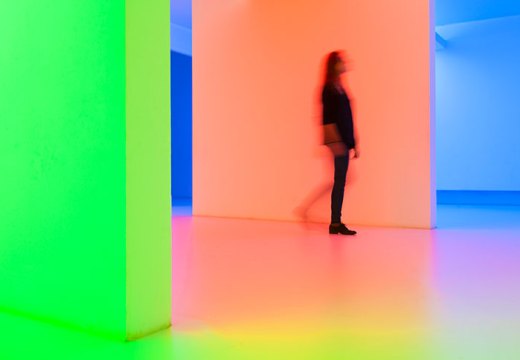
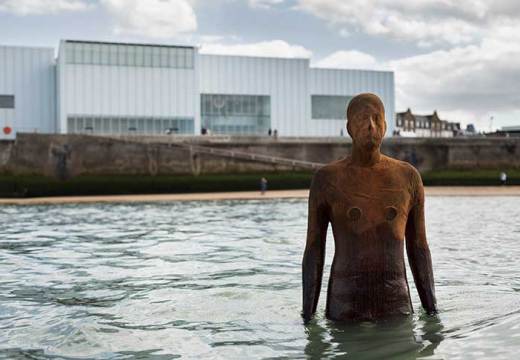
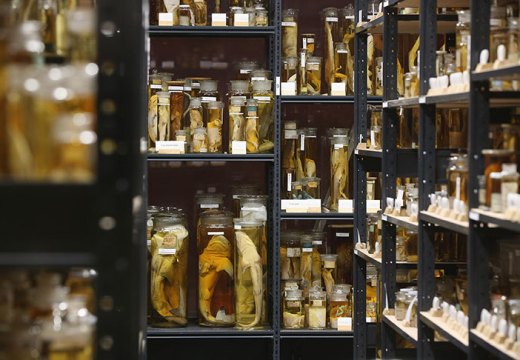









![Masterpiece [Re]discovery 2022. Photo: Ben Fisher Photography, courtesy of Masterpiece London](http://www.apollo-magazine.com/wp-content/uploads/2022/07/MPL2022_4263.jpg)
Suzanne Valadon’s shifting gaze